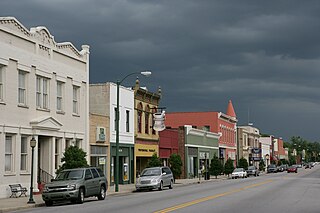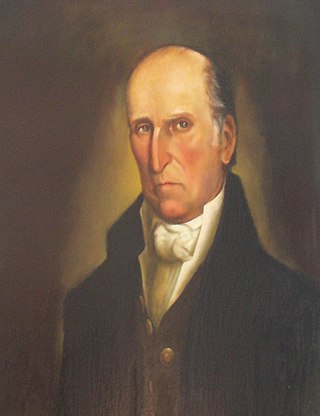Marion's stronghold
The area's historical significance lies in its four-month occupation by the militia forces of General Francis Marion, who orchestrated guerilla-style attacks on British targets from this base between December 1780 and March 1781. At that time, British forces dedicated to locating Marion found the camp and destroyed it; Marion and most of his band of several hundred men were not there at the time. The only known potential artifact associated with the Marion occupation is an earthen formation that may be a military defensive works. [3]
At the time of the American Revolution, this so-called “island,” named after an early owner of the property, comprised about five square miles (metric area) of the largely undeveloped swamp bounded by the Lynches and Pee Dee rivers and Clark’s Creek. [6]
The canopy of cypress and pines, and the dense understory of “cane breaks, briars, and vines” offered an ideal sanctuary for Marion’s rebel militia who were pursued by British and Loyalist forces seeking to eradicate them. The abundant fish and game was sufficient to sustain his soldiers numbering at their peak, perhaps 250 men. Snow’s Island, as occupied by Marion, formed a complex of multiple camps that afforded mobility to his troops in defending the stronghold, surrounded by farms of both patriot and loyalist families. [7]
Marion’s moniker as the “Swamp Fox” is largely associated with his sojourn on Snow’s Island, eliciting comparisons to the mythology of Robin Hood and the Sherwood Forest, including legends of his largesse to patriot families from plunder taken from British and Loyalist resources. Little evidence exists that Marion was addressed as “The Swamp Fox” in his lifetime. [8]
In early 1781, shortly after the Battle of Guilford Courthouse in March of 1781, Marion’s forces dealt a blow to British forces under John Watson Tadwell Watson at the Sampit River outside Georgetown, and just 30 miles from Snow’s Island. [9]
While operating 30-miles south of his base at Snow Island, Marion was informed that a Loyalist force under Lieutenant John Doyle had penetrated his island refuge and overwhelmed the small patriot force left to defend it, seven who were killed. When Marion returned to assess the damage he found its supplies despoiled and structures burned. As such, he decided to abandon the former stronghold. [10]
The only known struction associated with the Marion occupation is an earthen formation that may be a military defensive works. [3]

The Patriot is a 2000 American epic historical drama war film directed by Roland Emmerich and written by Robert Rodat. The film stars Mel Gibson, Heath Ledger, Joely Richardson, Jason Isaacs, Chris Cooper, and Tom Wilkinson. Set in Berkeley County, South Carolina, it follows Benjamin Martin (Gibson), an American colonist who is opposed to going to war with Great Britain but, along with his son Gabriel (Ledger), gets swept into the American Revolutionary War when his home life is disrupted, and one of his sons is murdered by a cruel British officer (Isaacs). Rodat has said Martin is a composite character based on four historical men: Andrew Pickens, Francis Marion, Daniel Morgan and Thomas Sumter.

Brigadier General Francis Marion, also known as the "Swamp Fox", was an American military officer, planter, and politician who served during the French and Indian War and the Revolutionary War. During the American Revolution, Marion supported the Patriot cause and enlisted in the Continental Army, fighting against British forces in the Southern theater of the American Revolutionary War from 1780 to 1781.

Georgetown County is a county located in the U.S. state of South Carolina. As of the 2020 census, the population was 63,404. Its county seat is Georgetown. The county was founded in 1769. It is named for George III of the United Kingdom.
Scouting in South Carolina has a long history, from the 1910s to the present day, serving thousands of youth in programs that suit the environment in which they live.

Marion is a city in and the county seat of Marion County, South Carolina, United States. It is named for Francis Marion, a brigadier general from South Carolina in the American Revolutionary War. The population was 6,939 at the 2010 census.

Andrew Pickens was a militia leader in the American Revolution. A planter and slaveowner, he developed his Hopewell plantation on the east side of the Keowee River across from the Cherokee town of Isunigu (Seneca) in western South Carolina. He was elected as a member of the United States House of Representatives from western South Carolina. Several treaties with the Cherokee were negotiated and signed at his plantation of Hopewell.

The Pee Dee River, also known as the Great Pee Dee River, is a river in the Carolinas of the United States. It originates in the Appalachian Mountains in North Carolina, where its upper course, above the mouth of the Uwharrie River, is known as the Yadkin River. The river empties into Winyah Bay, and then into the Atlantic Ocean near Georgetown.

The Battle of Kings Mountain was a military engagement between Patriot and Loyalist militias in South Carolina during the Southern Campaign of the American Revolutionary War, resulting in a decisive victory for the Patriots. The battle took place on October 7, 1780, 9 miles (14 km) south of the present-day town of Kings Mountain, North Carolina. In what is now rural Cherokee County, South Carolina, the Patriot militia defeated the Loyalist militia commanded by British Major Patrick Ferguson of the 71st Foot. The battle has been described as "the war's largest all-American fight".
The Pee Dee is a region in the northeast corner of the U.S. state of South Carolina. It lies along the lower watershed of the Pee Dee River, which was named after the Pee Dee, an Indigenous tribe historically inhabiting the region.
South Carolina was outraged over British tax policies in the 1760s that violated what they saw as their constitutional right to "no taxation without representation". Merchants joined the boycott against buying British products. When the London government harshly punished Massachusetts for the Boston Tea Party, South Carolina's leaders joined eleven other colonies in forming the Continental Congress. When the British attacked Lexington and Concord in the spring of 1775 and were beaten back by the Massachusetts Patriots, South Carolina Patriots rallied to support the American Revolution. Loyalists and Patriots of the colony were split by nearly 50/50.

The Battle of Kettle Creek was the first major victory for Patriots in the back country of Georgia during the American Revolutionary War that took place on February 14, 1779. It was fought in Wilkes County about eleven miles (18 km) from present-day Washington, Georgia. A militia force of Patriots decisively defeated and scattered a Loyalist militia force that was on its way to British-controlled Augusta.

The Siege of Fort Motte was a military operation during the American Revolutionary War. A force of Patriots led by General Francis "Swamp Fox" Marion and Lt. Colonel "Light Horse" Harry Lee set out to capture the British post at Fort Motte, the informal name of a plantation mansion fortified by the British for use as a depot because of its strategic location at the confluence of the Congaree and Wateree rivers. The British garrisoned roughly 175 British soldiers under Lt. Daniel McPherson at the fort.

The southern theater of the American Revolutionary War was the central theater of military operations in the second half of the American Revolutionary War, 1778–1781. It encompassed engagements primarily in Virginia, Georgia, North Carolina, and South Carolina. Tactics consisted of both strategic battles and guerrilla warfare.

David Fanning was a Loyalist leader in the American Revolutionary War in North and South Carolina. Fanning participated in approximately 36 minor engagements and skirmishes, and in 1781, captured the Governor of North Carolina, Thomas Burke, from the temporary capital at Hillsborough. Additionally, Fanning was captured by Patriot forces 14 times throughout the war, each time escaping or receiving a pardon. After the British defeat in the war, Fanning fled to Canada, where he was elected to the Legislative Assembly of New Brunswick from 1791 to 1801 representing Kings County. After being convicted of rape in 1801, Fanning was expelled from New Brunswick, and settled in Nova Scotia, where he lived the remainder of his life.
The Battle of Colson's Mill was a battle of the American Revolutionary War that took place in North Carolina on July 21, 1780. A Patriot militia under William Lee Davidson scattered a gathering of Loyalists at Colson's Mill, near the junction of the Rocky and Pee Dee Rivers in present-day Stanly County, North Carolina.
The Battle of Black Mingo was a skirmish during the American Revolution. It took place in September 29, 1780 in the vicinity of Dollard's Tavern at Willtown near Rhems, South Carolina. General Francis Marion leading Revolutionary forces attacked and scattered a contingent of Loyalist troops that had been left to secure the region by British Colonel Banastre Tarleton after his destructive march through the area.

The Siege of Fort Watson was an American Revolutionary War confrontation in South Carolina that began on April 15, 1781 and lasted until April 23, 1781. Continental Army forces under Henry "Light Horse Harry" Lee and South Carolina militia under Francis Marion besieged Fort Watson, a fortified British outpost that formed part of the communication and supply chain between Charleston and other British outposts further inland.

The Battle of Blackstock's Farm, a military engagement of the American Revolutionary War, took place in what today is Union County, South Carolina, a few miles from Cross Anchor, on November 20, 1780.

The Siege of Ninety Six was a siege in western South Carolina late in the American Revolutionary War. From May 22 to June 18, 1781, Continental Army Major General Nathanael Greene led 1,000 troops in a siege against the 550 Loyalists in the fortified village of Ninety Six, South Carolina. The 28-day siege centered on an earthen fortification known as Star Fort. Despite having more troops, Greene was unsuccessful in taking the town, and was forced to lift the siege when Lord Rawdon approached from Charleston with British troops.
The Battle of Tearcoat Swamp was a battle during the American Revolutionary War between Lieutenant Colonel Francis Marion's Patriot militia, and a Loyalist Militia led by Lieutenant Colonel Samuel Tynes. The battle took place on 25 October 1780 in present-day Clarendon County, South Carolina.
















